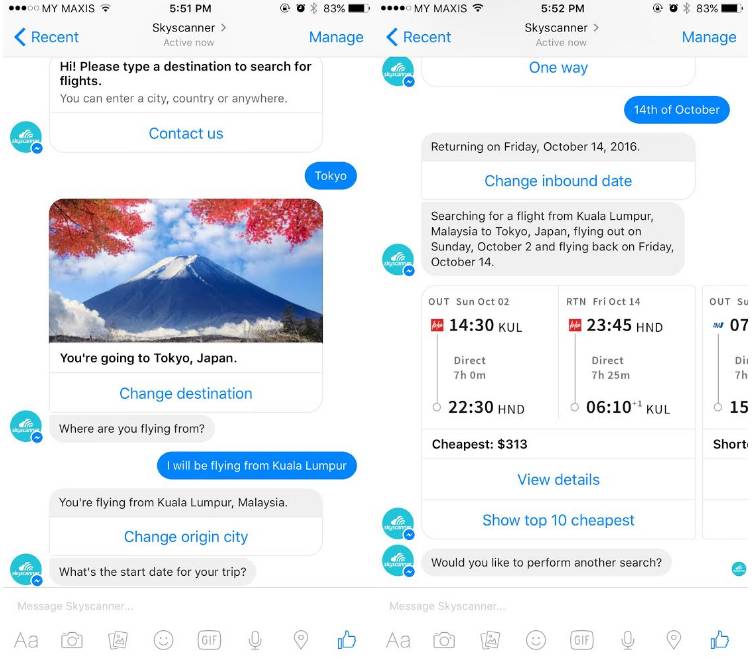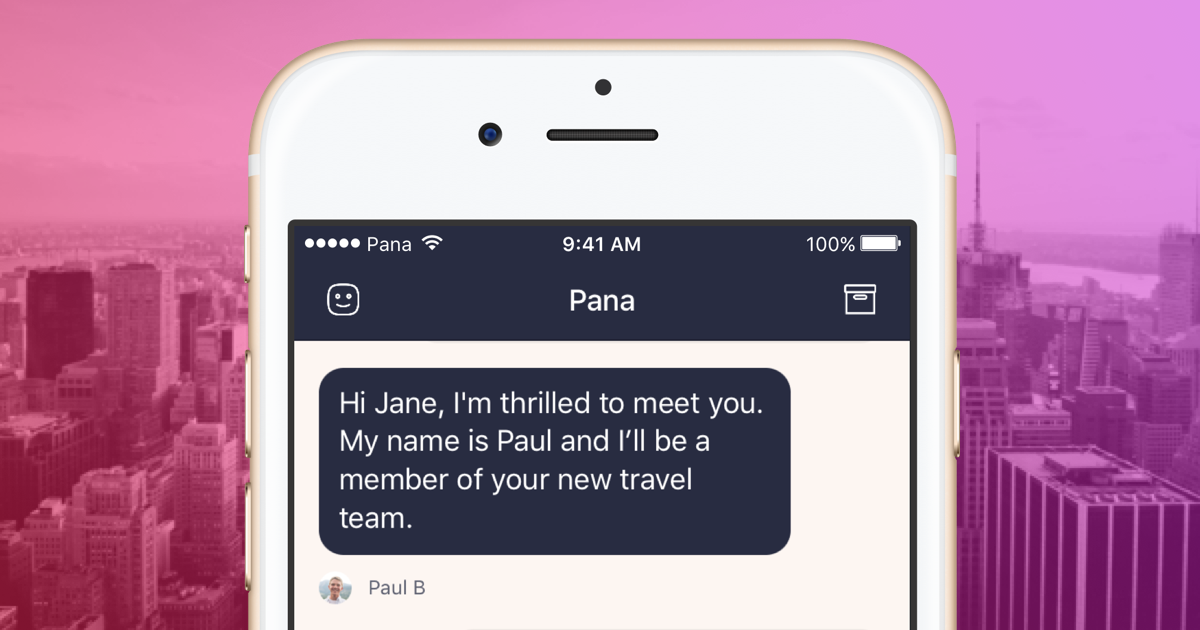{:en}
Want help choosing the best vacations?
Summer is coming and the truth is that we all want to spend a good vacation with family and friends.
Indeed, searching and booking the best vacation program is a relevant step, and it currently occurs mostly online. In fact, according to Statista, in 2016 global online travel sales totaled 564.87 billion U.S. dollars.
Thus, travel agencies and other entities should promote consumers the best possible online experiences. This is where chatbots in tourism come in and play a relevant role.
But what is a chatbot?
Chatbots in tourism or other areas are, by definition, a software that responds to natural language inputs and tries to maintain a conversation as if it were a real person. These are used in various areas, from entertainment to commercial, and this is due to the following advantages:
- Improved customer response time;
- Prevents errors in tasks that are simpler to perform;
- Reduced costs in customer service centers;
Therefore, companies that implement chatbots aim to achieve the highest ROI possible by investing in virtual assistants while maximizing profits and operational efficiency and reducing their costs.
Two possible uses for chatbots in tourism
Before enumerating the two possible uses, it is important to reflect that there are several other uses, and that, in this particular sector, there is still much ground to be explored in this matter.
Here are two examples of types of chatbots already used by some airlines, hotels and other entities in this area.
1. Planning trip support
The purpose of these chatbots is to help users plan their trip by offering information about flights, availability of hotels, car reservations and, of course, the reservation option that can occur in the chat itself or redirect the user to the respective page.
In this category, the Skyscanner company is a good example since it has developed a conversation robot on Facebook’s well-known “Messenger” platform. This chatbot allows users to search for flights faster based on the point of departure and destination.

2. Generate more attention and interaction
These chatbots aim to generate more customer attention, interacting more and creating closer proximity to the consumer.
Companies in the tourism industry can, through this technology, send price notifications when there are promotions, gather feedback about the customer experience, among many other functions.
As an example, we have “Pana” a chatbot designated as a virtual travel agent which monitors flight prices and notifies users whenever they are reduced.

In conclusion, are chatbots part of the future of tourism?
It would be imprudent to state something conclusive about the future of any industry. Peter Drucker once said: “The best way to predict the future is to create it.”
In this way, if you want to maintain or achieve leadership in the tourism market you must have the initiative to invest in the main aspect of your business, the customer.
Would you like to implement a chatbot in your website?
This means betting on technologies that enhance their experience as consumers such as chatbots and others that adjust to the trend of digital transformation.{:}{:pt}
Vai uma ajuda a escolher as férias perfeitas?
Estamos a chegar ao verão e verdade seja dita que todos queremos passar umas boas férias junto da família e dos amigos.
Com efeito, procurar e reservar o melhor programa de férias é um passo relevante, e que atualmente ocorre em grande parte das vezes online. De facto, de acordo com a Statista, em 2016 foram gastos mais de 564 mil milhões de dólares em compras de férias online.
Assim, as agências de viagens e outras entidades devem promover aos consumidores as melhores experiências possíveis online. Aqui entram os chatbots.
Afinal, o que é um chatbot?
Os chatbots são, por definição, softwares que respondem a inputs de linguagem natural e procuram manter uma conversa como se se tratasse de uma pessoa real. Estes são usados em várias áreas, desde entretenimento a comercial, e isto deve-se às seguintes vantagens:
- Melhoria no tempo de resposta ao cliente;
- Evita erros em tarefas mais simples de executar;
- Redução de custos nos centros de serviço ao cliente;
Neste sentido, as empresas que implementam chatbots visam obter o maior ROI (retorno no investimento) possível, investindo em assistentes virtuais, enquanto maximizam os lucros e a eficiência operacional e reduzem os seus custos.
Duas possíveis utilizações de chatbots no turismo
Antes de enumerar as duas possíveis utilizações referidas, convém refletir que existem várias outras e, que neste setor em particular, ainda há muito terreno por explorar no que toca a este assunto.
Seguem-se então dois exemplos de tipos de chatbots no turismo já utilizados por algumas companhias aéreas, hotéis e outras entidades desta área.
1. Apoio no planeamento de uma viagem
O objetivo destes chatbots é ajudar os utilizadores a planear a sua viagem, oferecendo informações acerca de voos, disponibilidade de hotéis, reservas de carros e, como não podia faltar, a opção de reserva que pode ocorrer no próprio chat ou redirecionar o utilizador para a respetiva página.
Nesta categoria, realço a empresa Skyscanner que desenvolveu um robot de conversação na conhecida plataforma “Messenger” do Facebook. Este chatbot permite aos utilizadores pesquisarem de forma mais rápida voos com base no ponto de partida e local de destino.

2. Promover mais atenção e interação
Estes chatbots surgem com vista a gerar mais atenção do cliente, interagindo mais e de forma mais atrativa e próxima do consumidor.
As empresas no ramo do turismo podem, através desta tecnologia, enviar notificações sobre os preços quando estes entram em promoção, recolher feedback acerca da experiência do clientes, entre várias outras funções.
Como exemplo, temos o “Pana” um chatbot designado de agente de viagens virtual que monitoriza os preços dos voos e notifica os utilizadores sempre que estes são reduzidos.

Em suma, o futuro do turismo passa por chatbots?
Seria imprudente afirmar que o futuro terá um ou outro caminho. Já o sábio Peter Drucker dizia que a melhor maneira de prever o futuro é criá-lo.
Com efeito, se pretende manter ou alcançar a liderança no mercado do turismo deve ter a iniciativa de investir no aspeto principal do seu negócio, o cliente.
Quer desenvolver e implementar uma estratégia de comunicação digital?
Isto significa apostar em tecnologias que melhorem a experiência destes enquanto consumidores tais como chatbots e outras que se ajustem à grande tendência da transformação digital.{:}